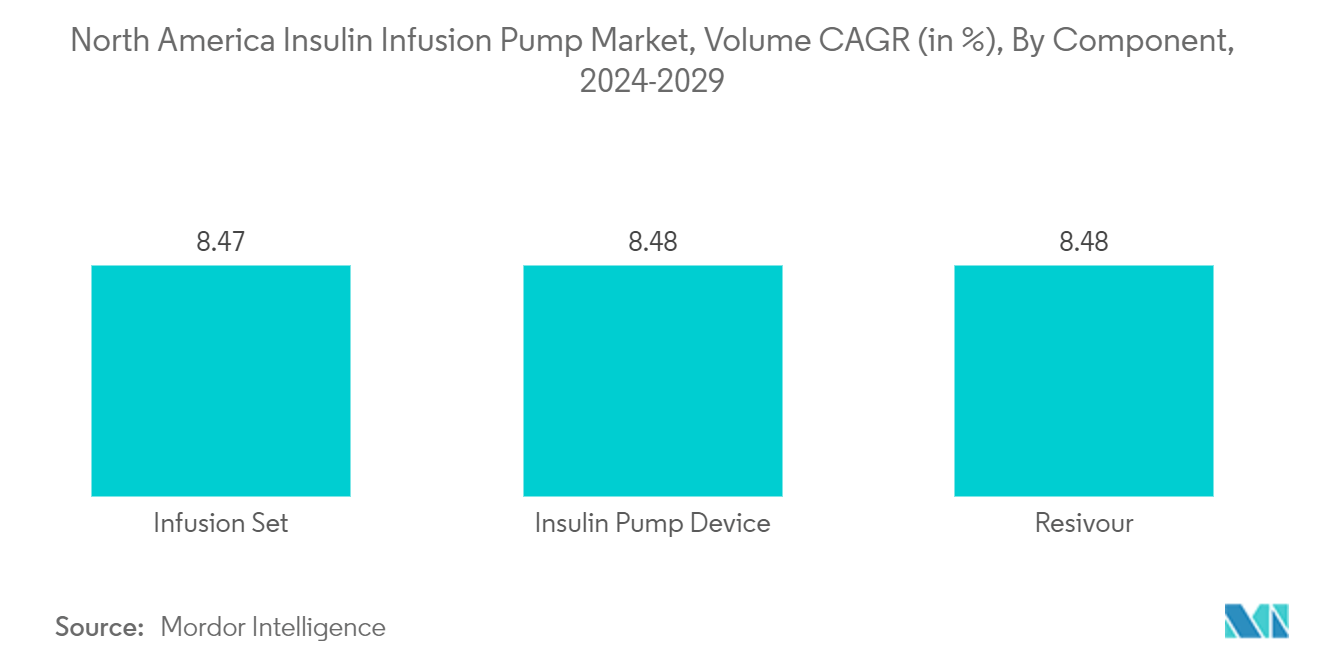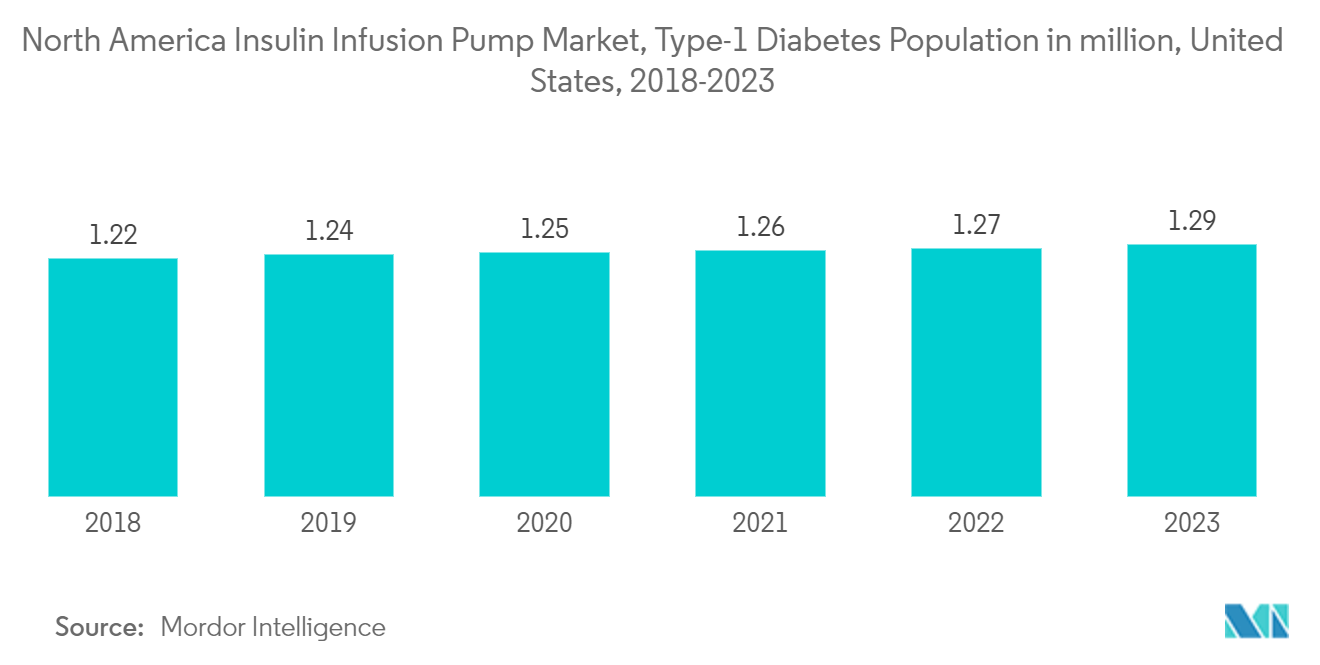Market Trends of North America Insulin Infusion Pumps Industry
Insulin Pump Monitors Hold Highest Market Share in North America Insulin Infusion Pump Market
North America is expected to dominate the market due to factors such as the easy availability of insulin delivery devices, high consumer awareness, and reimbursement policies.
The rapidly increasing incidence and prevalence of diabetic patients and healthcare expenditure in the United States indicate the increasing usage of diabetes care products. Insulin pumps are often covered by private insurance carriers under the durable medical equipment section of your policy. Diabetes patients could be required to pay a deductible and/or a percentage of the cost (co-insurance), depending on their insurance coverage.
The patient's insurance company may pay 100% of the insulin pump cost if their deductible and out-of-pocket limit has been satisfied. Depending on the state and other criteria, government insurance like Medicare and Medicaid may cover insulin pumps. Depending on the program, a patient's out-of-pocket expenses under government insurance may differ. Because insurance plans don't always like to cover pricey medical devices like these, or because they have specific requirements that must be met to buy a particular insulin pump, access, and affordability are also significant factors that influence this decision for many people.
Modern pumps come with a variety of capabilities that let patients customize both their diabetes management strategy and the various supplies they use. Insulin pumps are assisting many PWDs in leading healthier, less taxing lifestyles, even though they are expensive devices that insurance isn't always keen to pay.
Therefore, owing to the factors above, the growth of the studied market is anticipated in the North American region.

The United States Holds Highest Market Share in North America Insulin Infusion Pump Market.
In North America, a variety of insulin pumps are available. Traditional insulin pumps have an insulin reservoir (or container) and pumping mechanism attached to the body with tubing and an infusion set. Other insulin patch pumps are worn directly on the body and have a reservoir, pumping mechanism, and infusion set inside a small case. Patch Pumps are controlled wirelessly by a separate device that allows the programming of insulin delivery for meals from the patch.
According to the Academy of Managed Care Pharmacy in North America, insulin pumps cost between USD 4,500 and 6,500 for uninsured individuals. Price varies depending on the pump's features, brand, and size. Some insurance plans will cover the cost of the pump. Pump costs with insurance can expect typical copay and coinsurance rates ranging from USD 5 to half of the total. Millions of Americans are still unemployed especially those from underrepresented or underserved populations. Most insurance companies in North America cover insulin pump therapy with variable out-of-pocket expenses.
Insulin, a diabetes medication over 9 million Americans take, made headlines for its skyrocketing prices. Unfortunately, insulin prices have only dropped slightly since the start of the pandemic. One of the biggest burdens on public health in the globe is regarded as diabetes. About 14% of American adults have diabetes, a condition characterised by persistently elevated blood glucose levels, and more than 25% of people over 65. Recent decades have seen a rise in the prevalence of diabetes, partly as a result of the obesity pandemic.
Chronically high glucose levels in diabetes can impair neuronal function, worsen renal illness, worsen retinopathy (eye disease), promote inflammation, damage blood vessels, increase the risk of heart attacks and strokes, and weaken the immune system.
The technology combines glucose monitoring using a CGM with advanced algorithms in the insulin pump to predict low glucose and suspend insulin delivery. The technological innovation in the insulin pump device market is likely to drive the market during the forecast period.


